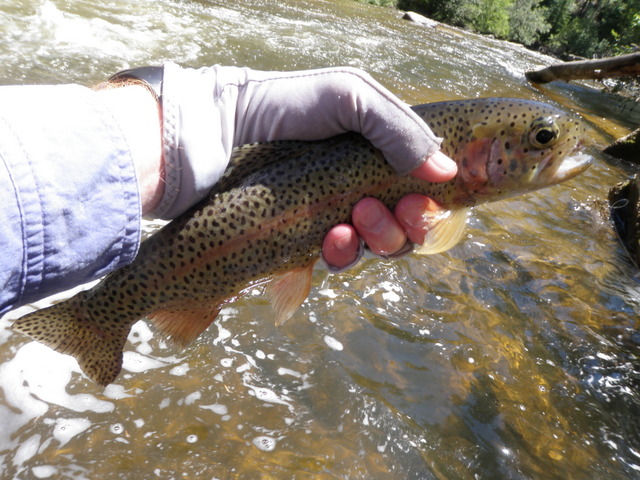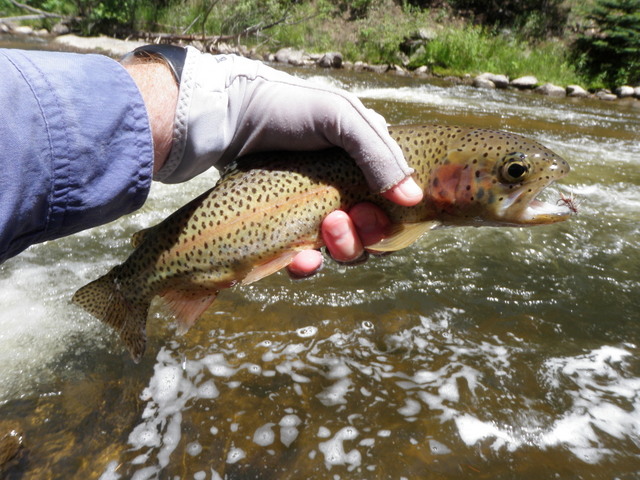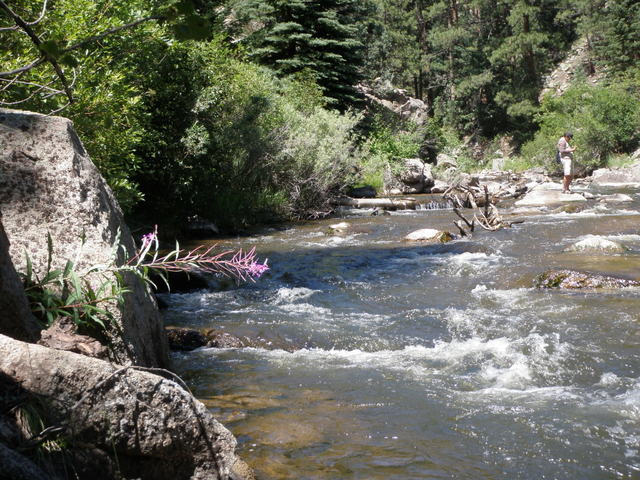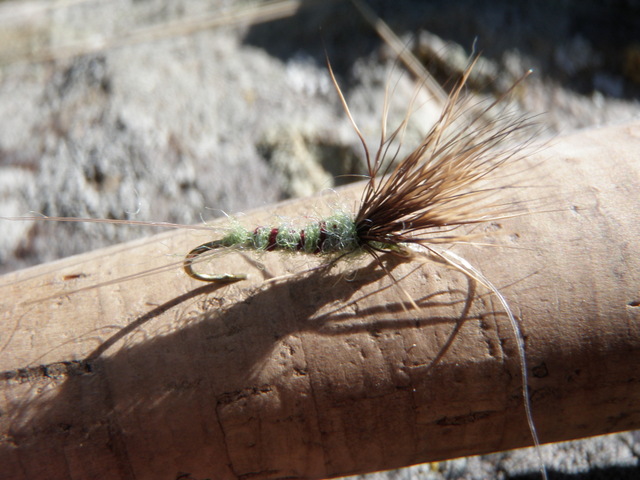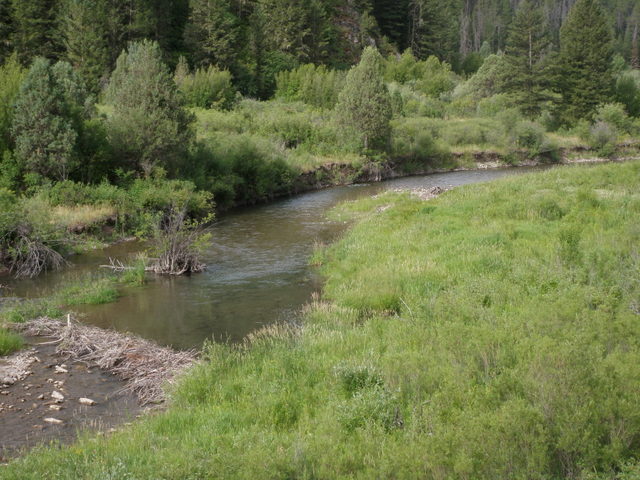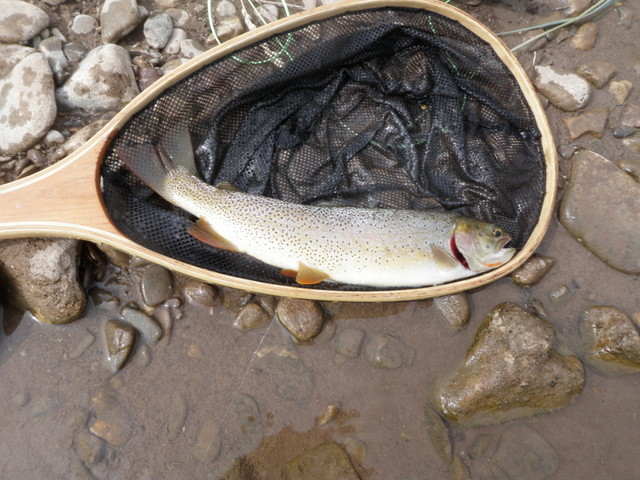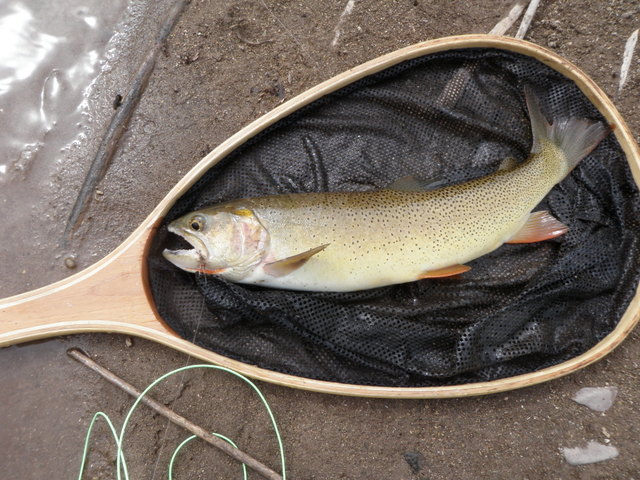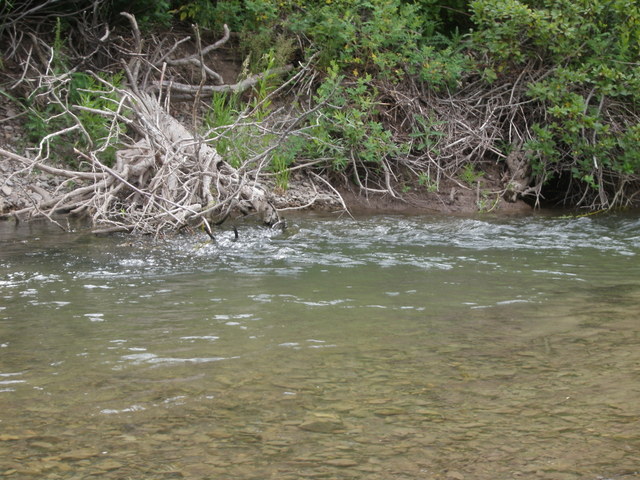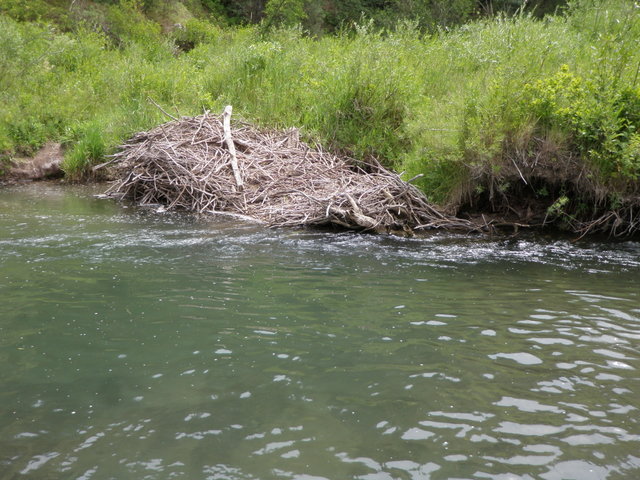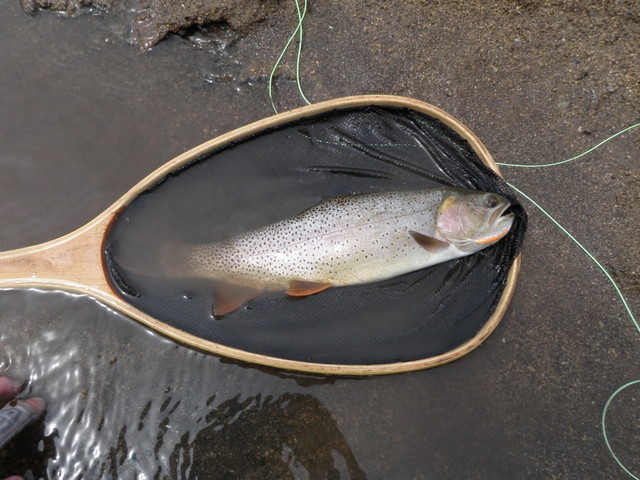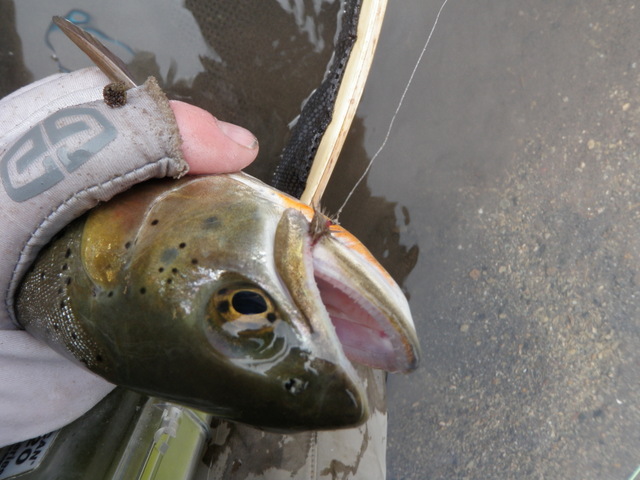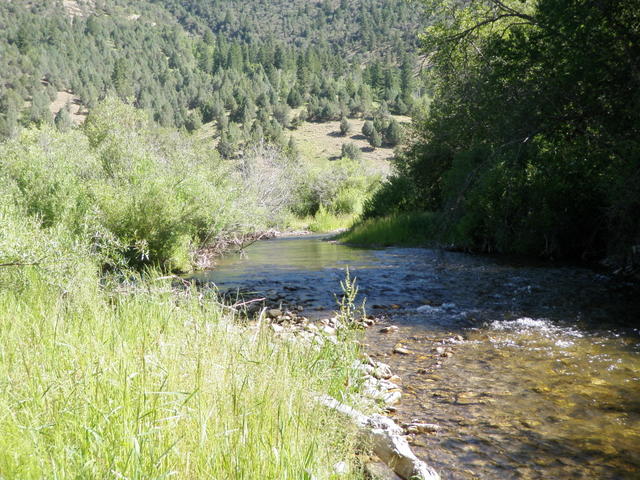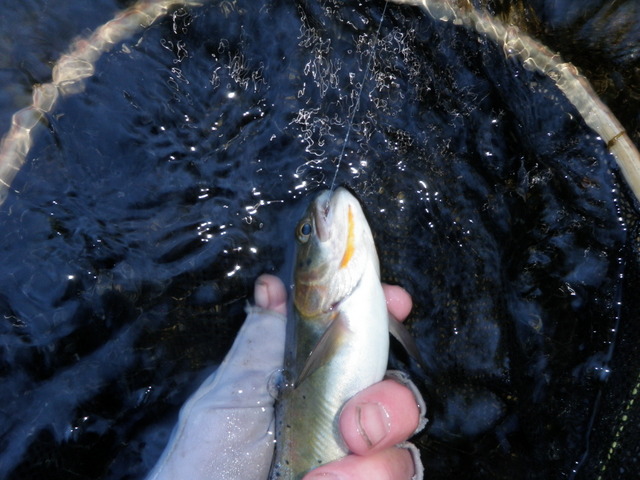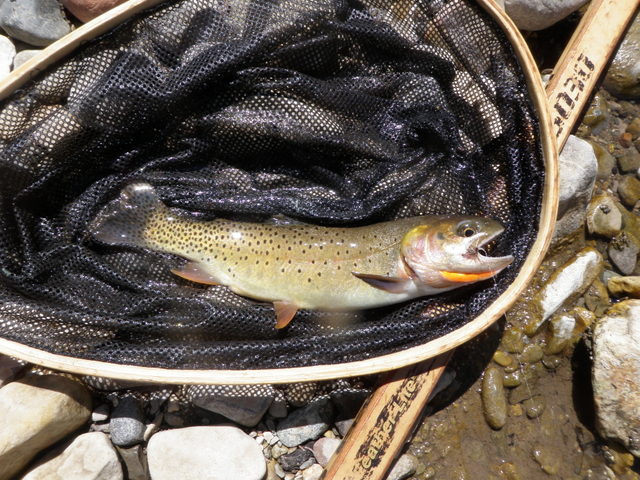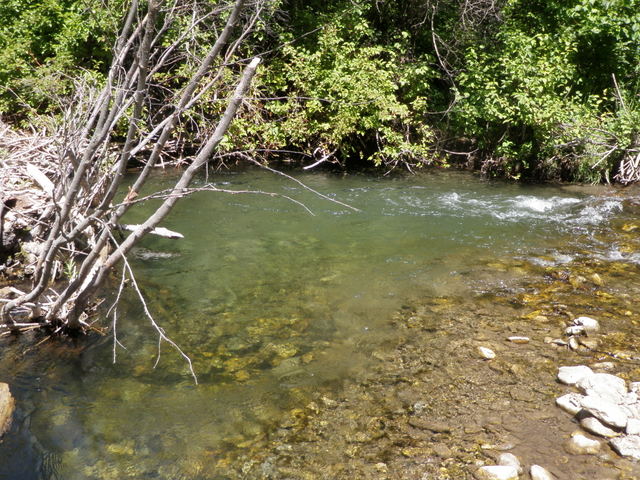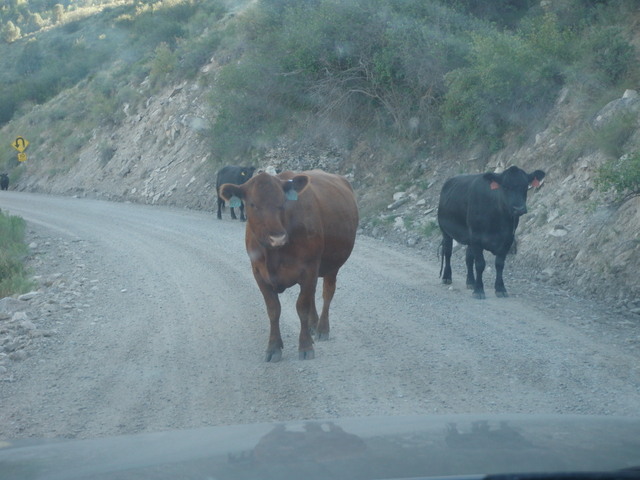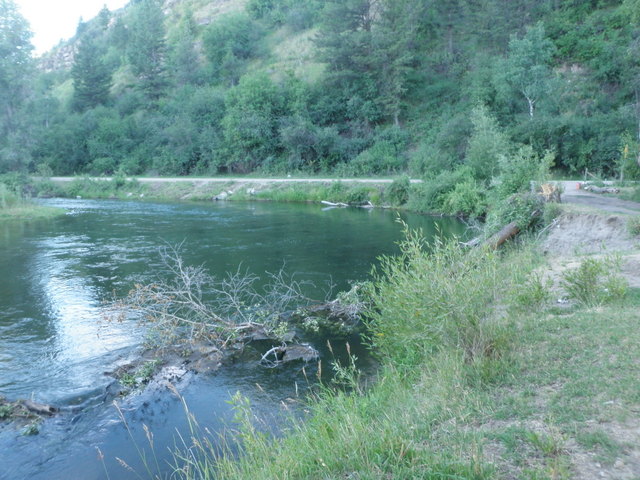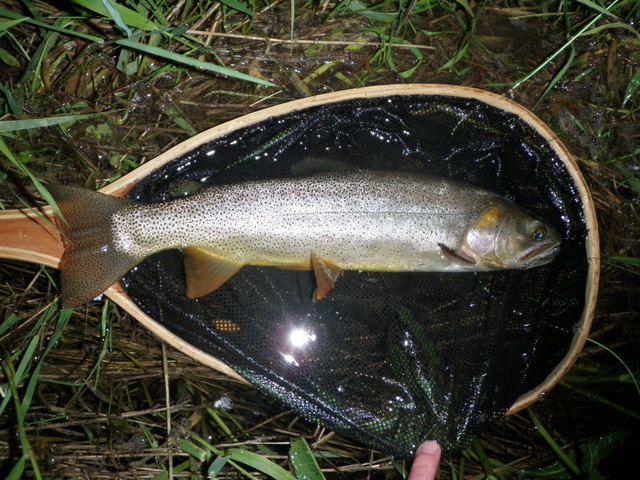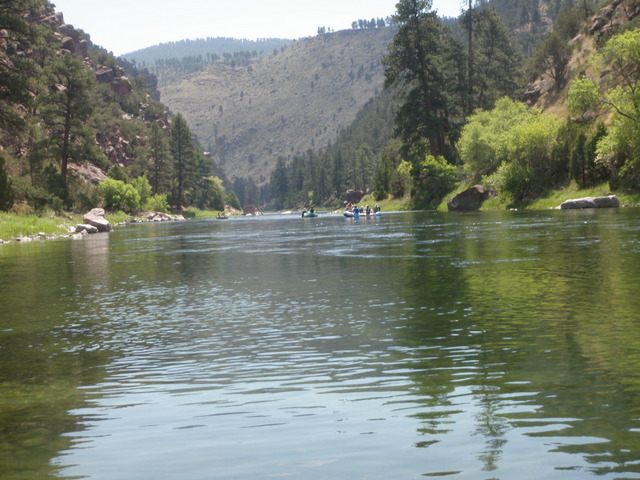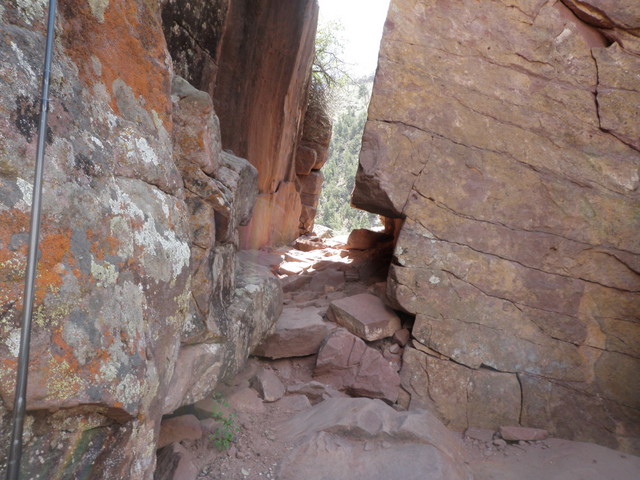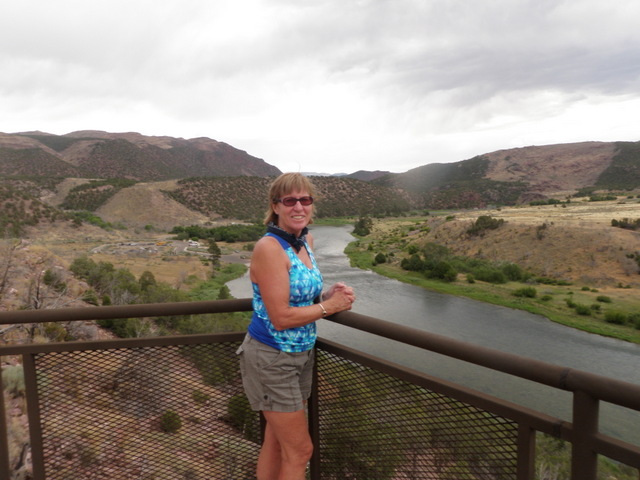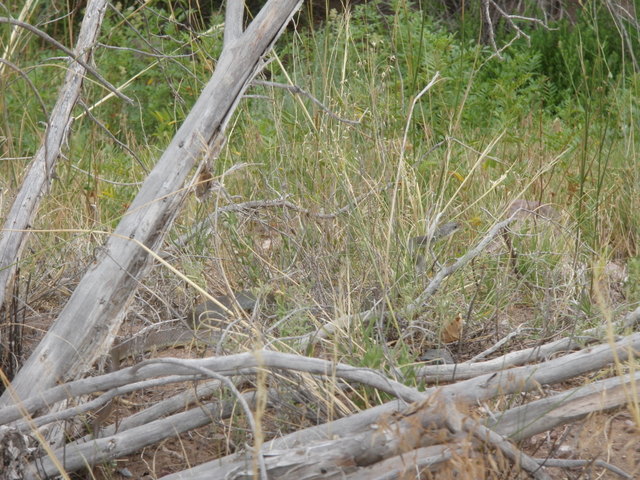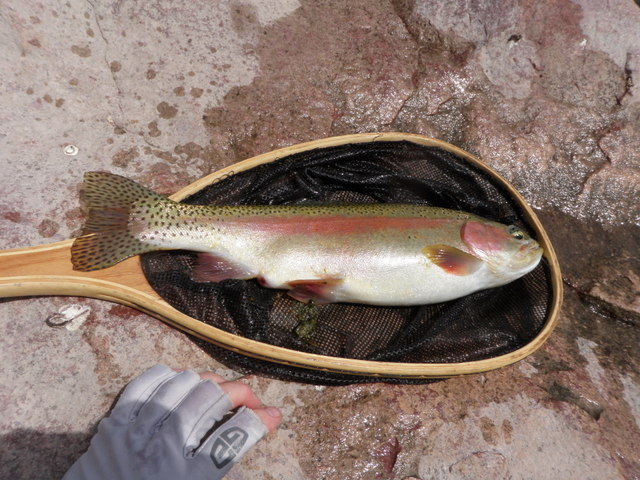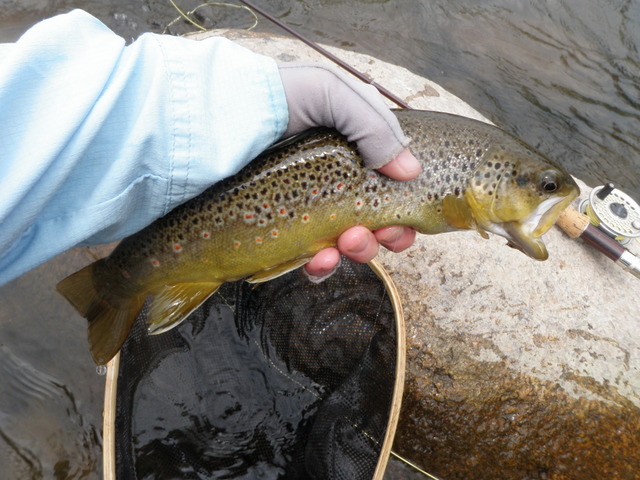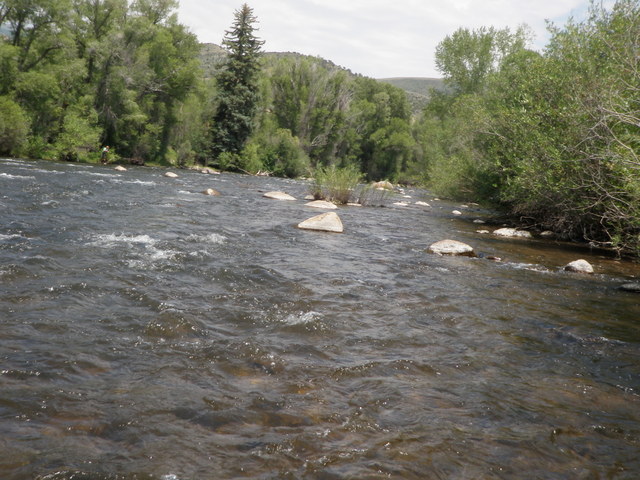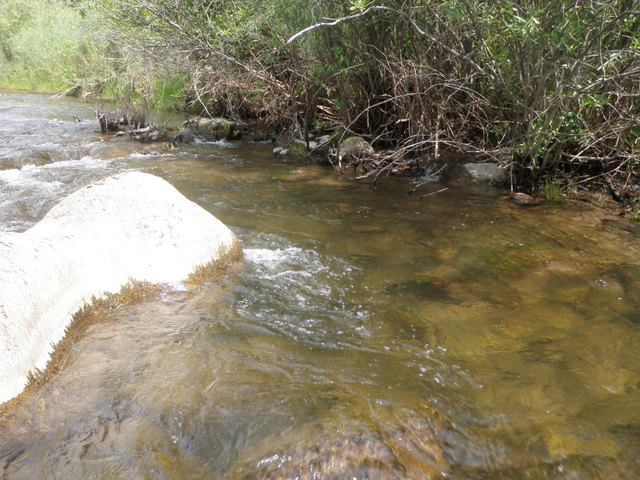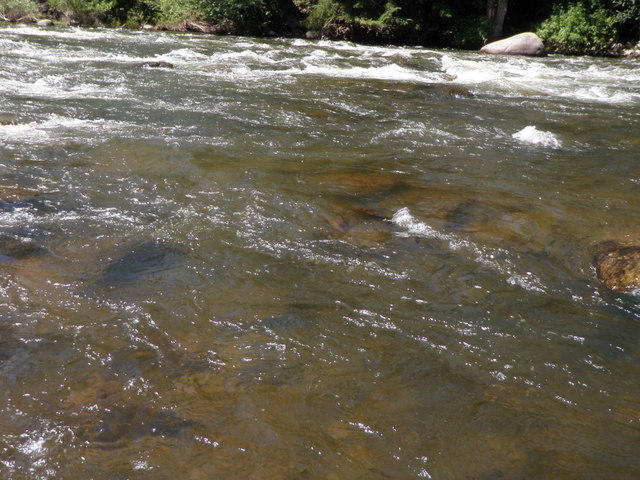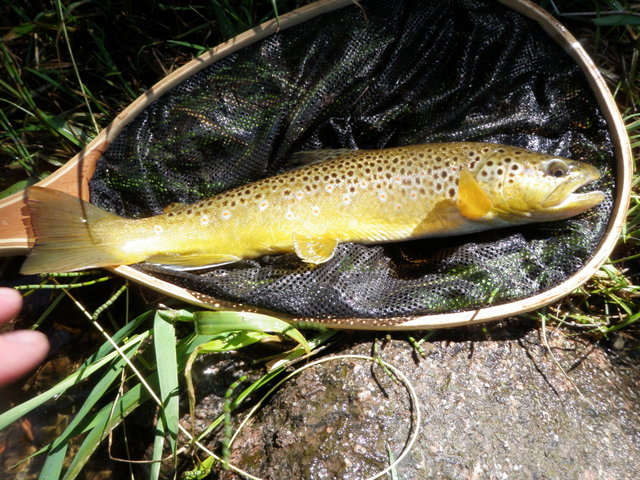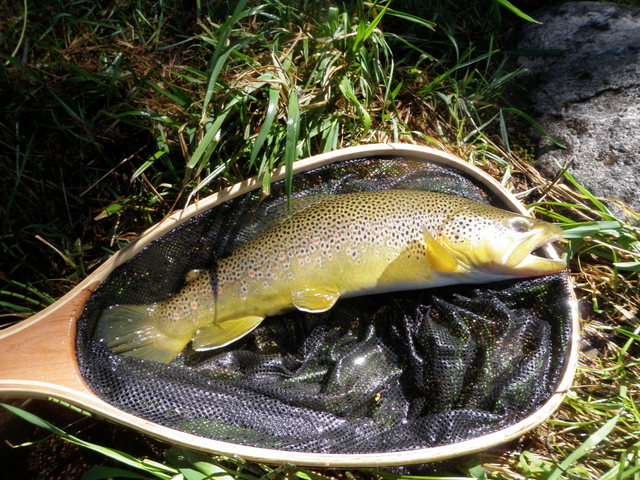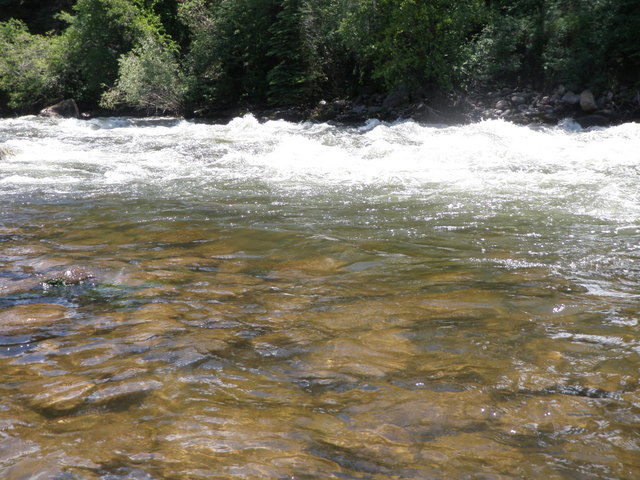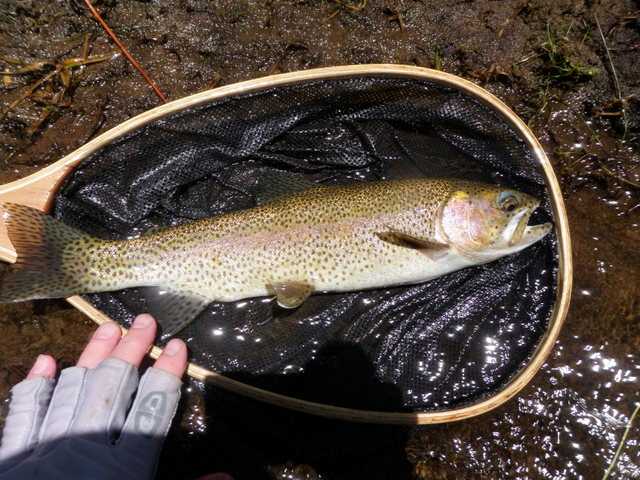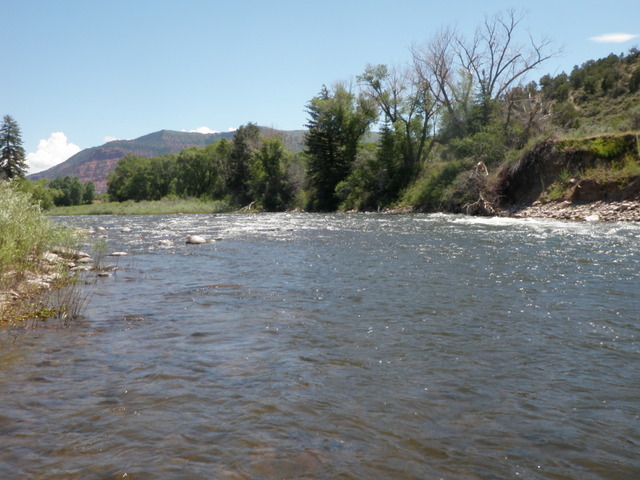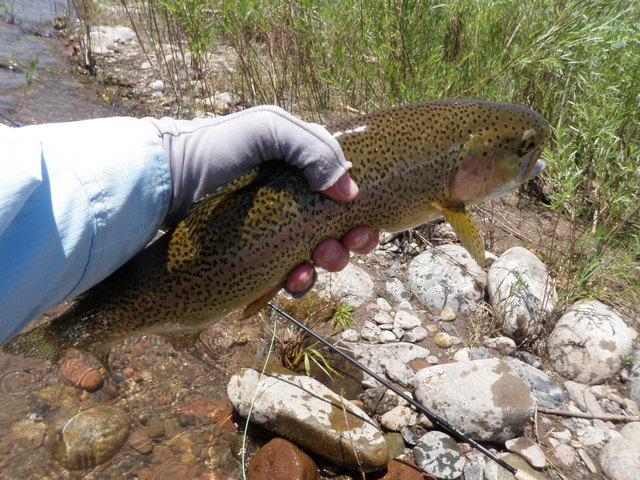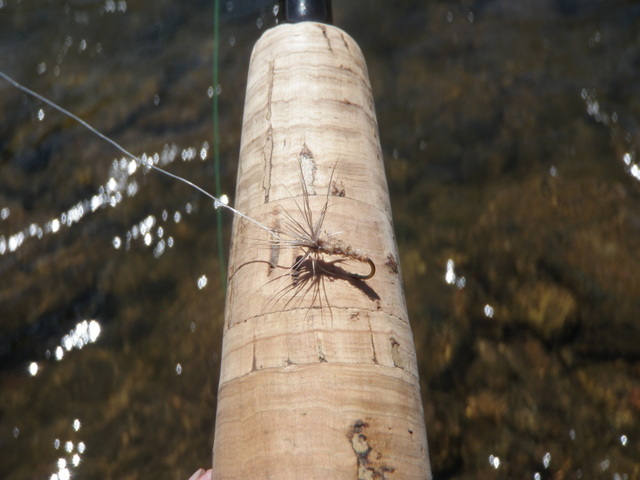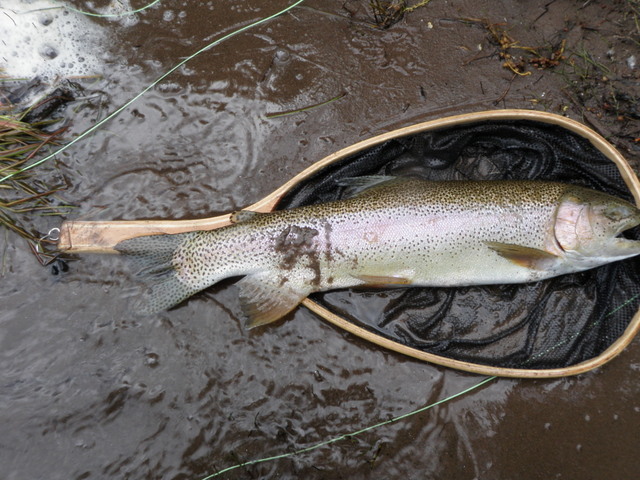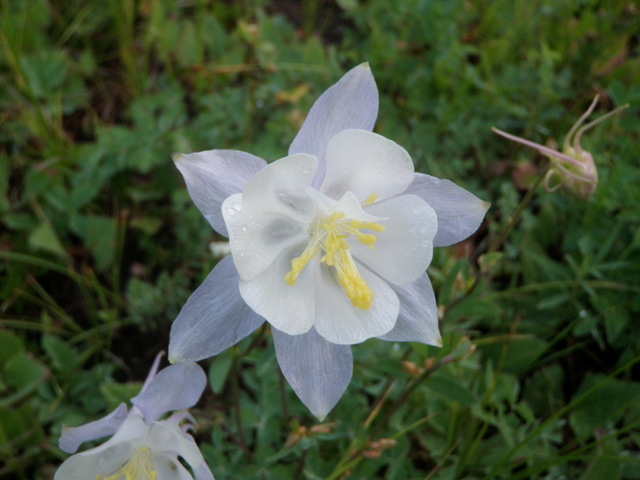Time: 9:30AM – 7:00PM
Location: Edwards rest area across from parking lot; upstream from pedestrian bridge; Arrowhead second gate
Fish Landed: 21
Eagle River 07/17/2014 Photo Album
My most recent fishing trip was all about overcoming adversity to enjoy some great fishing. My two days on the Eagle River on July 10 and 11 remained in my mind as I reached a point at work where I could break away for another fishing trip. I checked the flows on the DWR site, and the Eagle River had dropped from the 600 cfs range to the low 500’s. A series of storms enabled the river to remain relatively high, but I guessed that an upcoming five day period of high temperatures would bring the flows down to the 300 level, and past experience told me that Eagle River fishing would get difficult with sunny days, hot temperatures and low flows.
Jane wanted to join me, but she did not want to hang out by herself while I fished, so I planned to camp Wednesday and Thursday night at Hornsilver and fish on Thursday and Friday. Jane decided to drive to the mountains on Friday afternoon to join me at the campsite on Friday night, and then we would do some bicycling on Saturday and return to Denver to avoid the Sunday traffic. I packed the Santa Fe with everything required for two campers and departed Denver at around 2:30PM. Before I left, I called my friend, Todd Grubin, and asked if he was interested in joining me for some fishing on the Eagle River on Thursday and Friday. Todd replied that he’d be delighted to fish with me and offered his house as a place to sleep, but I told him about our plans to camp and declined his gracious invitation.
The first sign that I was in for a rough trip was an accident on interstate 70 that caused stop and go driving from where I entered the highway until just beyond Colorado Boulevard.
I arrived at Hornsilver at 5PM and immediately assembled the Eureka five-person tent and staked it out and threw my pad, sleeping bag, pillow and clothing duffel inside. I decided to pay for only Wednesday night in case the fishing was subpar, or I decided to move to another campsite even though Jane and I agreed on Hornsilver as our destination. As I began preparing my dinner I noticed some dark clouds to the north and some distant thunder, but it seemed apparent that the storm would pass by.
Unfortunately as I was finishing my soup, the wind began to kick up, and I realized that the storm was not going to skip Hornsilver. I turned on the burner and began heating water in hopes that I could wash the dishes and jump in the car before the rain commenced. Suddenly a strong gust of wind swept toward me and lifted the five-person tent that was weighed down with my belongings into the air. The tent was now upside down and ten feet away from its original position. I quickly ran to the billowing projectile and pushed it back to a nearly upright position, but another gust of wind forced the tent from my hands and back to a position on its side.
The next phase of the storm now kicked in and sheets of rain began to blow sideways. I was never going to get the tent upright with the strong wind and rain blowing from the north, so I decided to collapse it as fast as I could and then wait out the storm in the car. As the rain drenched my jeans and fleece sweater, I pulled the pins from the tent poles and allowed the entire mass to settle to the ground. The brown tarp that is usually under the tent had somehow been crumpled into a ball so I grabbed one end and pulled it over the tent for some rain protection, and I quickly repositioned the rain fly over the rest of the tent as best as I could in the driving rain.
I jumped in the car stunned by what had just happened and removed my wet fleece and pulled on my down parka for warmth, and then I decided to try and find a spot where I could call Jane and let her know my predicament. I drove through the small mountain town of Red Cliff, but I never had a phone signal, so I looped back to the upper road and then back to 24 and continued up the mountain pass. When I got to the top of the pass, I had four dots and found a pullout where I called Jane to tell her that she should not bother making the trip on Friday as we no longer had a viable tent to camp in.
By the time I returned to the campground the rain stopped, and I was able to wash the dishes and pack them away in the appropriate bin. I was now ready to assess the damage from the storm. Remember that my clothes, sleeping bag and pillow were inside the collapsed tent. The first thing I discovered was that the rain fly had five or six tears mostly along the seams so apparently this was the weakest link in the face of the initial gusts of wind from the north. Clearly the tent could not be used for the remainder of the trip especially given the forecast of more rain over the next few days.
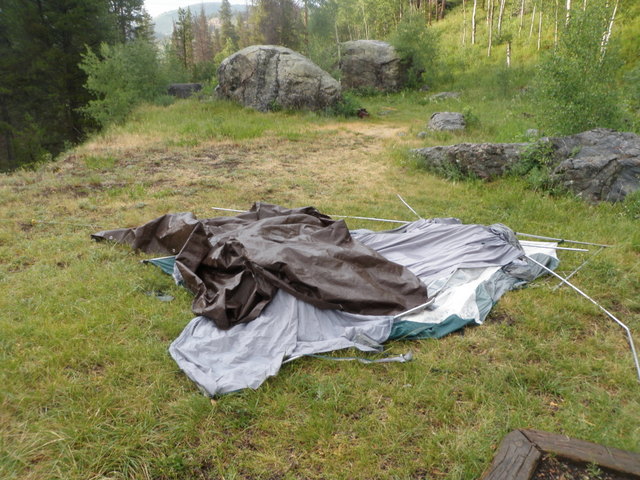
Aftermath of Storm That Hit Hornsilver Campground
I pulled the brown tarp off the collapsed pile and draped it over a large boulder. Next I dragged the sheared rain fly on top of another wide rock nearby and spread it out. This left the tent itself along with the poles that were flat on the ground ten feet away from their original position. I gathered the poles and folded them up and lined them up next to the tent, and then I searched for the entry door and zipped it open and lifted the canvas to find my belongings. My pillow was still in a garbage bag, so it was dry and protected from the rain, and I quickly transferred it to the Santa Fe. Next I found my duffel bag and it was wet on one side, but when I pulled it out, I found my fleece pullover and fleece pants were dry. I carefully removed the dry items that I planned to wear that night and placed them on the front seat and stowed the bag and the rest of the contents in the rear of the Santa Fe.
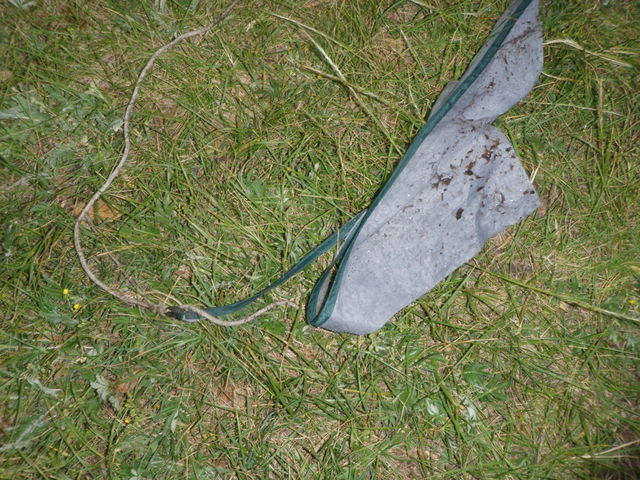
A Gust of Wind Ripped the Rain Fly
Next I returned to the flattened tent and searched for my sleeping bag. In a strange stroke of luck the Thermarest pad doubled over when the tent flipped and provided a shelter for the sleeping bag. The pad was totally wet on one side, but the sleeping bag was as dry as when I tossed it in the tent an hour earlier. I now knew I would be able to sleep in the back of the Santa Fe on Wednesday evening, and I could deal with the aftermath of the tent disaster in the morning. I cleared enough space in the back of the Santa Fe to position my sleeping bag and pillow and fell asleep to the sound of more rain.
After a decent night of rest I woke up to a soggy mess. I ate a quick breakfast and rearranged the back of the Santa Fe so that the dry cargo was separated from the wet items. I balled up the wet tarp, tablecloth, rain fly and tent and placed them in the very rear of the SUV and then anchored them with the water container. I was scheduled to meet Todd at the Edwards Rest Area at 9AM, and I planned to accept his offer of sleeping accommodations, and therefore I would not need the camping gear for the remainder of the week.
As I drove toward Edwards, I anxiously looked down at the Eagle River and much to my relief, it was clear and unaffected by the rain from the previous evening. I pulled into the parking lot at 8:30 and called Jane and then prepared to fish. Todd rolled into a space near me at our agreed upon time of 9AM, and in short order we were ready to fish. I decided to use my Sage 4 piece 4 weight, and we agreed to try the water a bit downstream from the parking lot as other fishermen were ahead of us, and we assumed they would head directly to the long pool next to a sandy beach that was a popular spot upstream from the parking lot.
Todd and I both began our morning with dry/dropper configurations. I tied on a yellow Charlie Boy hopper and below that I added a copper john, and we began alternating pockets as the river was still rather high and wading to areas more distant from shore was a safety risk. After I covered a few juicy pockets with no results, I added a bright green caddis pupa below the copper john; and after this change, I landed a 15 inch brown trout. Eventually the copper john was exchanged for a beadhead hares ear, and this combination served me for most of the morning.
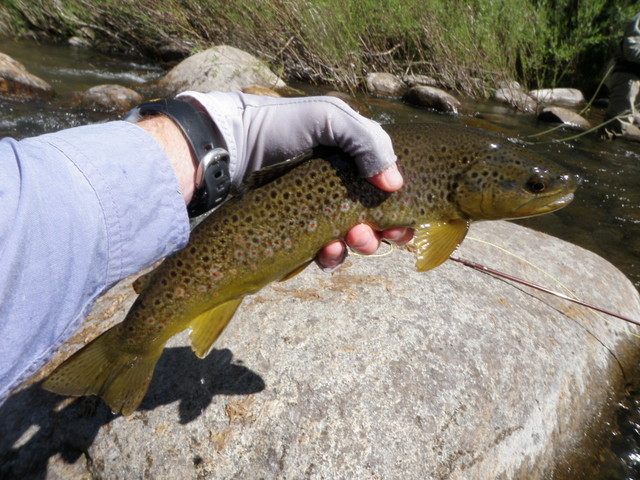
15 Inch Brown Landed Thursday Morning
When we approached lunch log, the large fallen log that parallels the river that attracts tourists and the lunch crowd, we encountered another fisherman, so we exited the river and circled around to a point forty yards upstream. We fished through a few more pockets in this area, and then again cut back to the fisherman path and advanced to a point where we could branch back to the river above the long beach pool. Neither Todd nor I caught any fish during this one hour period of fishing and movement.
Finally above the long beach pool we had the water to ourselves, and we continued the pattern of alternating the attractive pools. Despite some intense fishing, the fish continued to avoid our flies until I reached the last attractive pocket at the top of the fast water section. Here I cast to the middle and almost immediately the Charlie Boy darted sideways, and I set the hook and played a 15 inch brown trout to my net. Once I released the buttery brown, I lobbed a cast to the very top of the pool, and the foam hopper dipped, and I was attached to a streaking 13 inch rainbow. Both of these fish were fooled by the bright green caddis pupa, and suddenly my outlook on fishing the Eagle River improved considerably.
Next we approached a narrow stretch of slow moving water between the rocky bank and some very fast whitewater. Todd began prospecting the lower half of this area and then moved to the midsection. On one of his drifts we both spotted the tail of a substantial fish, and we could now see the holding position. As I looked on, Todd made a series of dead drifts over the fish with no reaction. I suggested that he try lifting the nymph and pupa in front of the fish’s position, and miraculously on perhaps the twentieth drift, the target trout grabbed the caddis pupa. It was a thrill to watch Todd work over this fish and get rewarded for his persistence.
It was now noon, and Todd needed to run some errands and return to his house to walk his dog, Quincy, so we returned to the parking lot. We decided that I would stay and eat lunch and then fish the right bank above the pedestrian bridge, and then I would return to the parking lot and meet Todd at 2PM.
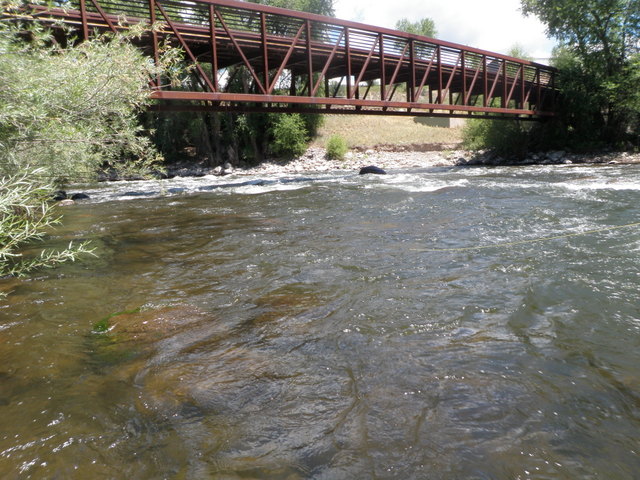
Pedestrian Bridge at the Edwards Rest Area
The area above the pedestrian bridge is one of my favorites on the Eagle River, and I’ve experienced some memorable runs of hot fishing there. Todd did inform me that both sides of the river above the pedestrian bridge are private water, so that concerned me a bit, but we decided that I’d probably be OK since I was tucked beneath a steep bank and out of the vision of passing motorists on route 6. I quickly consumed my lunch and then hustled along the path from the rest area parking lot to the bike path and across the pedestrian bridge. On the southwest side of the river I circled under the bridge and faced an attractive wide pool, and here I began an hour and ten minutes of superb fishing.
I resumed fishing with the Charlie Boy hopper, beadhead hares ear, and bright green caddis pupa, and this was pocket water fishing at its finest. I fished from the bridge to a point half way to the large bend where the river begins paralleling the highway, and the water was characterized by long deep pockets behind large protruding boulders. For the most part these deep runs were 8-10 feet wide and bordered by the steep bank and dense bushes on one side and strong fast current on the other side. I worked the side of the slot tight to the bank first and then shifted my casts methodically to the left until I floated the flies along the current seam, and of course I covered the tail and then the midsection and then the top.
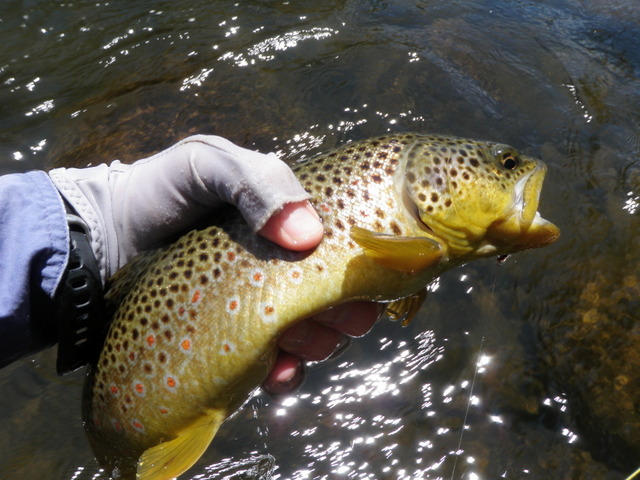
A Very Chunky 15 Inch Brown
In addition to covering water that was private and probably unmolested for two months due to the high flows, I enjoyed the added benefit of increased insect activity. I began to notice quite a few adult caddis dapping the surface and the occasional pale morning dun slowly gliding up from the surface. By the time I found a steep path to the top of the bank and began my hike back to the parking lot, I had landed six brown trout on the bright green caddis pupa including three smaller fish, one chunky twelve inch fighter, and two fat fifteen inch beauties. I had a blast.
My pace was quick as I strode back to the parking lot and arrived twenty minutes before 2PM, so I hopped on the path and headed to the river by lunch log. As I expected, the fisherman that occupied this space earlier was no longer there, so I prospected the deep runs across from the log for ten minutes, and I was pleased to land two rainbows including a fine thirteen inch fish on the caddis pupa before I returned to the car and met Todd.
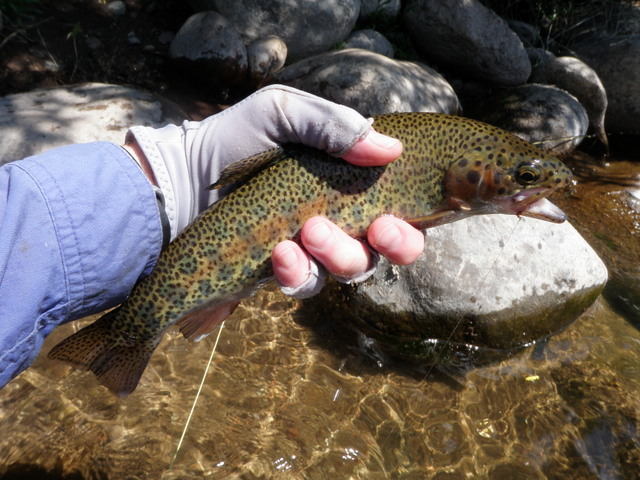
Pretty Eagle River Rainbow
Todd and I discussed our next move and decided that there were too many fishermen to contend with at the rest area, so he suggested that we migrate to the Arrowhead community private water that was upstream a mile or two. Because Todd is a resident, he possesses access, and who was I to object to this proposal? We drove up route 6 and made a left turn at the second or middle gate, and Todd’s pass allowed the gate to swing open. I followed closely and slid through the gate behind him, and we drove a short distance to a cul-de-sac and parked. I jumped out of the car and gazed down at the water below us, and it was beautiful with lots of deep pockets and slots to explore.
From the cul-de-sac we hiked up a steep bank and found a bike path and walked downstream to a point where a path cut to the river. An appealing stretch of water appeared before us, and we began the chore of working our way upstream along the south bank. It really wasn’t a chore, and I began with the same dry/dropper that served me well at the rest area. Almost immediately I noticed the Charlie Boy dart sideways, but I experienced only a momentary hook up. I persisted and landed a nice brown on the caddis pupa shortly thereafter.
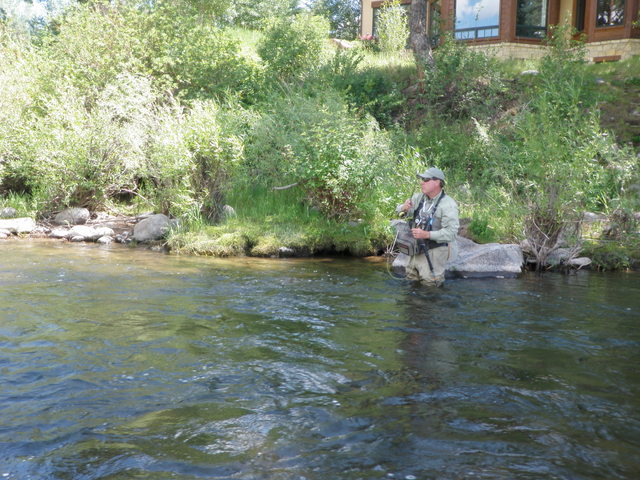
Todd Demonstrates a Backhand Cast
As Todd and I moved upstream, the sky clouded up, and we began to observe an increased quantity of caddis on the water. This provoked a series of surface rises, so I clipped off the three fly setup and tied on a size 12 gray stimulator. This move paid dividends as I landed two but then the sun reappeared, and that halted the caddis dapping and also ended the effectiveness of the stimulator.
I decided to revert to the dry/dropper method, however, I substituted a Chernobyl ant for the Charlie Boy, and in addition I added a beadhead hares ear nymph as one of my droppers. This combination worked wonders for the next hour or so as I continued to land fish on a fairly regular basis. Two were particularly memorable and emerged from shallow water along the bank.
In the first case, I tossed a cast just below some overhanging branches and a sizable brown refused the Chernobyl, so I now knew I had an interested fish in my range. I carefully made another cast with no success, but on the third effort, the fifteen inch brown flashed to the side and grabbed the trailing hares ear. I set the hook and battled the beautiful wild fish to my net. This was a great thrill and the type of fishing I love.
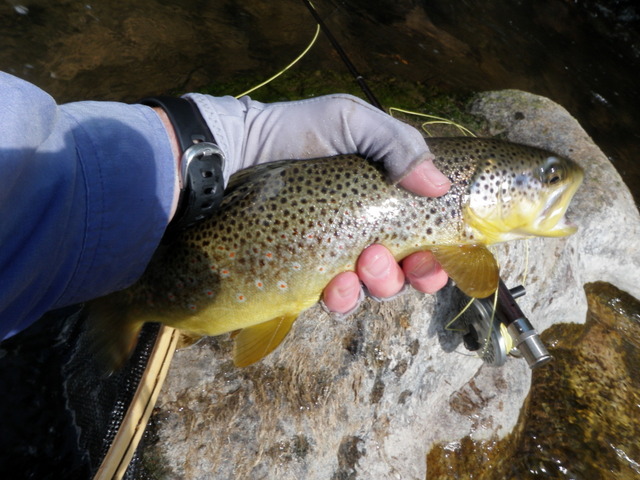
This Brown Was Caught in Shallow Water
I waded upstream a bit further and found a similar shallow lie just downstream from some branches, and here I observed another brown of similar dimensions as it rose and sipped something small from the surface. Once again I had my target, and I flipped the Chernobyl just above the fish. As the surface fly slowly drifted over the brown, it confidently rose and sucked in the Chernobyl, and then the fight was on. I carefully played my prized catch to the net and then released it and watched in awe as it swam back to its natural environment.
Early evening was now upon us as I circled around Todd and found myself at the tail of a huge deep pool that was 60 feet long and 20 feet wide for most of its length. I began fishing with the dry/dropper combination, but as I did this, caddis began dapping and a few fish rose. When I arrived at the juicy top of the pool, I clipped off the three flies and knotted a size 16 gray caddis to my line. On a drift along the right side of the pool near the top, a twelve inch brown responded and smashed the caddis.
Next there was a short six foot long pocket that was deep and right below the whitewater area above the pool. I spotted several fish working the surface, so I began floating my caddis in the area. On the fourth or fifth cast near the bubbling water at the very top of this section, a gorgeous fifteen inch rainbow emerged and gulped in my fly. This fish put up quite a battle with several sprints downstream, but I eventually subdued it and snapped a photo to remember it by. What a way to end a fantastic day of fishing on the Eagle River.
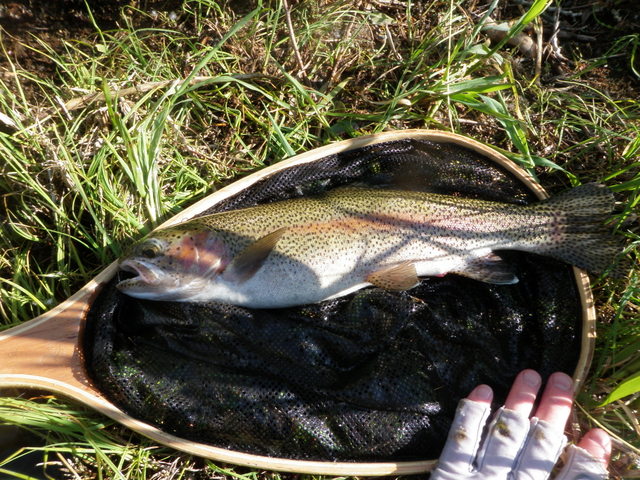
Impressive 15 Inch Rainbow from Eagle River
During our time in the Arrowhead piece of water, I landed ten fish with four taking a caddis dry fly, one falling for the Chernobyl and the remainder grabbing the beadhead hares ear. This action included four sizable brown trout and the final rainbow. I bought Todd dinner at the Gashouse Grill to show my appreciation for gaining me access to the Arrowhead section, and for being my fishing companion on a memorable day. Oh and also for allowing me to use his house as my place of rest on Thursday night. It was quite a contrast from the back of the Santa Fe surrounded by soggy clothes.
Like this:
Like Loading...

